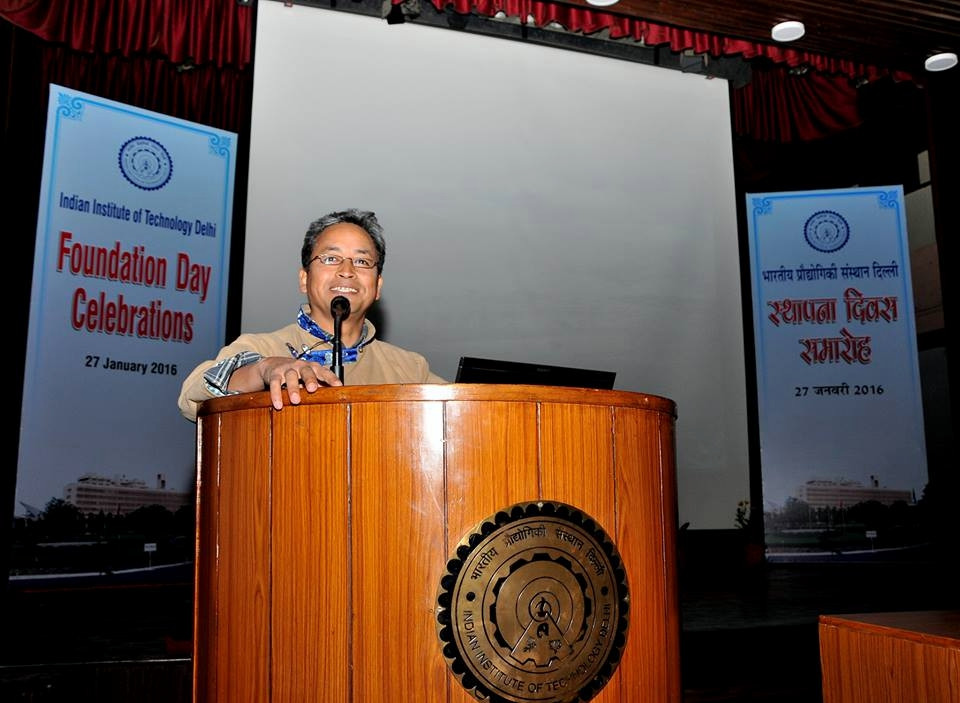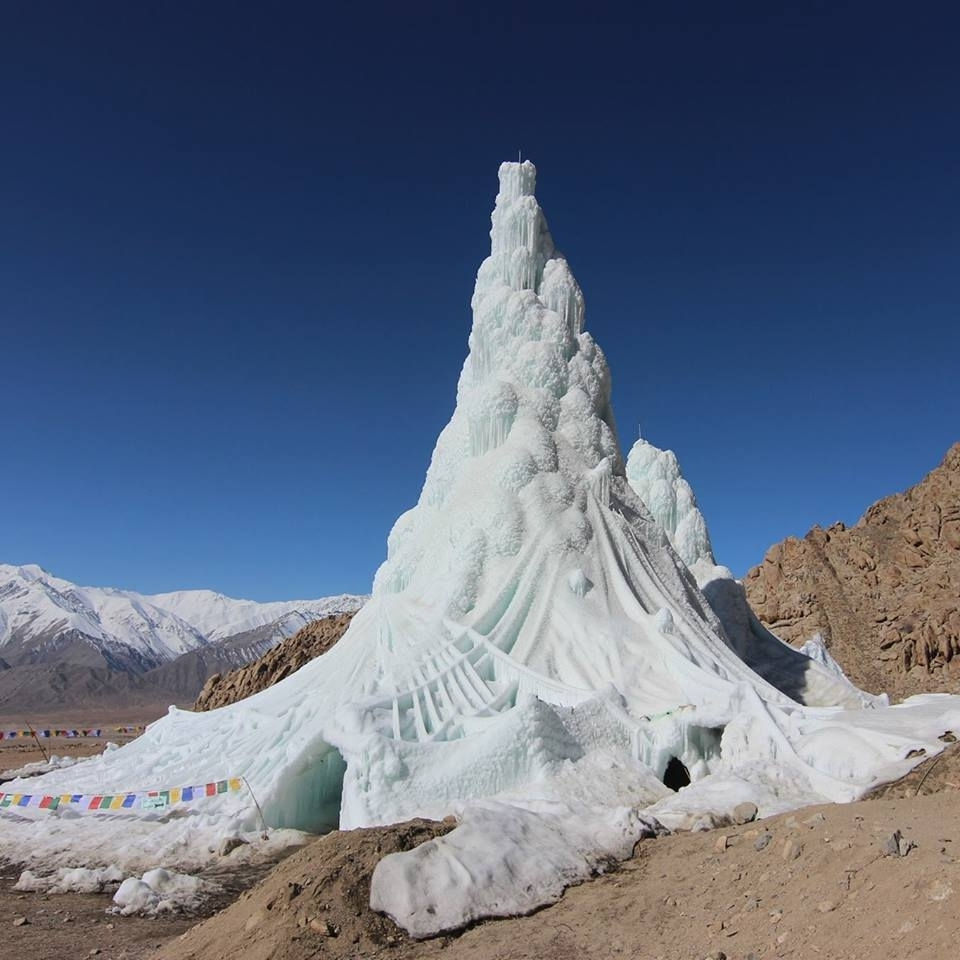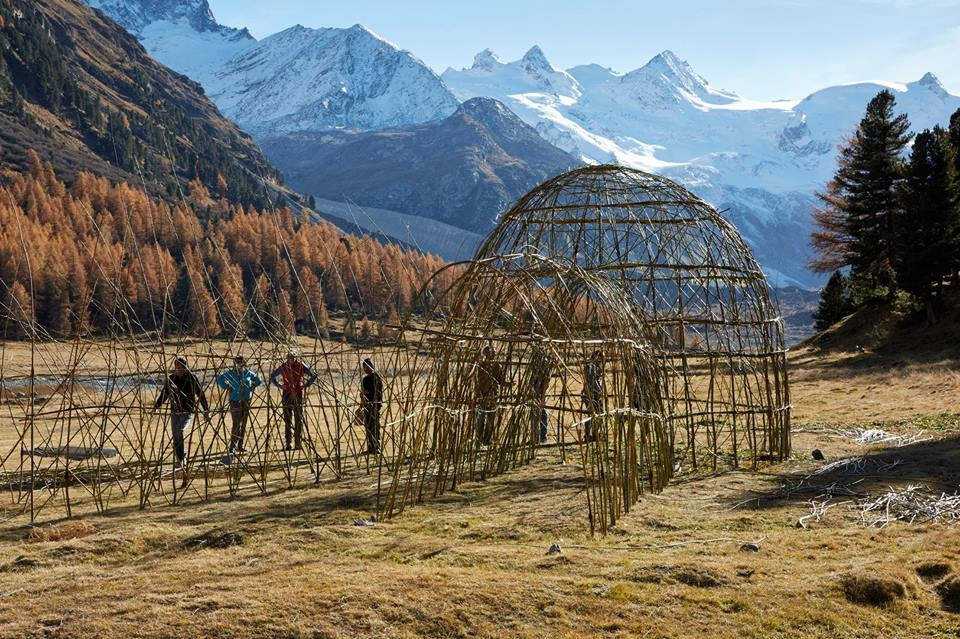 Sonam Wangchuk. Photo by: Sonia Chauhan.[/caption]
The SECMOL school runs on solar power and uses neither of the fossil fuels. Wangchuk invented the Ice Stupa technique that generates artificial glaciers, used for collecting winter water in form of conically fashioned ice heap.
In 1994, Wangchuk was helpful in the launch of Operation New Hope, a collaboration of state government, village districts and the civil community to bring improvements in the government school systems.
They provide an open practical ambiance to the pupils where they could start. Not merely in the thought, but more in the spirit. The approach was to let the freshmen run the school, build the eco-friendly mud buildings and manage the expenses. The students studied on the go and the consequences have been marvelous. Scholars who were disappointed by their board exams as they had failed multiple times have joined SECMOL and are now successful. SECMOL had been the pathbreaking campaign.
The sterile land and absence of regular origins of water made living even more difficult for Ladakhis. Water from the icebergs or glaciers were the only solution, but the glaciers are frozen for a long portion of the year. So, Sonam Wangchuk had been sparked by Chewang Norphel’s production of artificial glaciers.
In Ladakh, when he noticed people striving to meet their necessary water requirements, he arrived with a resolution of creating upright ice stupas to collect water for a lasting time. The stupa is 35-40 meters high and can reserve up to 16,000 cubic liters of water which is sufficient to irrigate 10 hectares of an area.
In two months, Wangchuk’s partners succeeded to create a high towering ice stupa that can store about 1,50,000 liters of water. This model was put to examine and was raised in the mildest possible situation and lowest permissible height of 10,400 feet on the banks of the Indus river. After the favorable model, Wangchuk and his partners are carrying their idea to a liberal scale and mapping to build around 80 - 90 stupas at the top of the barrens of Phyang village.
[caption id="attachment_2403" align="aligncenter" width="960"]
Sonam Wangchuk. Photo by: Sonia Chauhan.[/caption]
The SECMOL school runs on solar power and uses neither of the fossil fuels. Wangchuk invented the Ice Stupa technique that generates artificial glaciers, used for collecting winter water in form of conically fashioned ice heap.
In 1994, Wangchuk was helpful in the launch of Operation New Hope, a collaboration of state government, village districts and the civil community to bring improvements in the government school systems.
They provide an open practical ambiance to the pupils where they could start. Not merely in the thought, but more in the spirit. The approach was to let the freshmen run the school, build the eco-friendly mud buildings and manage the expenses. The students studied on the go and the consequences have been marvelous. Scholars who were disappointed by their board exams as they had failed multiple times have joined SECMOL and are now successful. SECMOL had been the pathbreaking campaign.
The sterile land and absence of regular origins of water made living even more difficult for Ladakhis. Water from the icebergs or glaciers were the only solution, but the glaciers are frozen for a long portion of the year. So, Sonam Wangchuk had been sparked by Chewang Norphel’s production of artificial glaciers.
In Ladakh, when he noticed people striving to meet their necessary water requirements, he arrived with a resolution of creating upright ice stupas to collect water for a lasting time. The stupa is 35-40 meters high and can reserve up to 16,000 cubic liters of water which is sufficient to irrigate 10 hectares of an area.
In two months, Wangchuk’s partners succeeded to create a high towering ice stupa that can store about 1,50,000 liters of water. This model was put to examine and was raised in the mildest possible situation and lowest permissible height of 10,400 feet on the banks of the Indus river. After the favorable model, Wangchuk and his partners are carrying their idea to a liberal scale and mapping to build around 80 - 90 stupas at the top of the barrens of Phyang village.
[caption id="attachment_2403" align="aligncenter" width="960"] Artificial glaciers called Ice Stupa.[/caption]
Sonam Wangchuk has won added global realization catching the esteemed Rolex Awards for Enterprise 2016. The honors were granted in Los Angeles and Sonam’s “Ice Stupas” design is amongst the five champions this time at the awards. Moreover, their reserves will promote the project and prefer ice stupas as a climate-change accommodation and desert-greening method in Ladakh and Switzerland.
The model of Ice Stupa was built and tested in the town of St.Mortiz after he received the invitation from Swiss authorities. The Swiss government plan on taking Wangchuk's expertise to build more Ice Stupa in the Swiss Alps to counter the phenomenon of fast melting glaciers. Proof of this successful model can be seen from Ladakh, Sikkim to Switzerland.
[caption id="attachment_2404" align="aligncenter" width="960"]
Artificial glaciers called Ice Stupa.[/caption]
Sonam Wangchuk has won added global realization catching the esteemed Rolex Awards for Enterprise 2016. The honors were granted in Los Angeles and Sonam’s “Ice Stupas” design is amongst the five champions this time at the awards. Moreover, their reserves will promote the project and prefer ice stupas as a climate-change accommodation and desert-greening method in Ladakh and Switzerland.
The model of Ice Stupa was built and tested in the town of St.Mortiz after he received the invitation from Swiss authorities. The Swiss government plan on taking Wangchuk's expertise to build more Ice Stupa in the Swiss Alps to counter the phenomenon of fast melting glaciers. Proof of this successful model can be seen from Ladakh, Sikkim to Switzerland.
[caption id="attachment_2404" align="aligncenter" width="960"] Ice Stupa Making in Switzerland[/caption]
“There are endless possibilities for low-cost mitigation, made in India adaption technology that offers various applications for people in the mountains around the world.”
Wangchuk is nowadays struggling to establish an alternative college on a 65-hectare land granted by a community that will involve teens from mountain regions of the world- Ladakh, the Himalayas and others in winning their answers to the difficulties facing them.
Well, now that his courage, daring fortitude, and never-say-die quality has led and carried him into the global spotlight, Wangchuk never seems to harbor any anger. Possibly the highest education his campaign can yield is the art of mercy, of positiveness and flexibility. Certainly, global grandeur will be a familiar moment.
Ice Stupa Making in Switzerland[/caption]
“There are endless possibilities for low-cost mitigation, made in India adaption technology that offers various applications for people in the mountains around the world.”
Wangchuk is nowadays struggling to establish an alternative college on a 65-hectare land granted by a community that will involve teens from mountain regions of the world- Ladakh, the Himalayas and others in winning their answers to the difficulties facing them.
Well, now that his courage, daring fortitude, and never-say-die quality has led and carried him into the global spotlight, Wangchuk never seems to harbor any anger. Possibly the highest education his campaign can yield is the art of mercy, of positiveness and flexibility. Certainly, global grandeur will be a familiar moment.
"In the Universe there is no top, no bottom, no right, and no left, these are but creations of our own mind, based on what other people have told us. As long as we see things through our conditioned minds and colored glasses we won’t be able to see things as they really are."
Sonam Wangchuk

